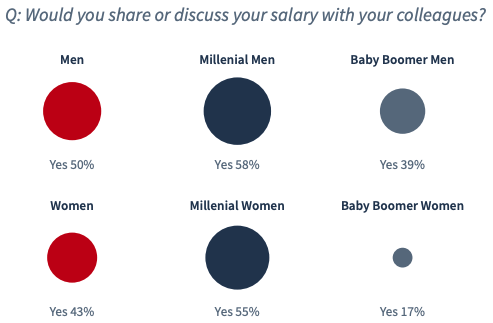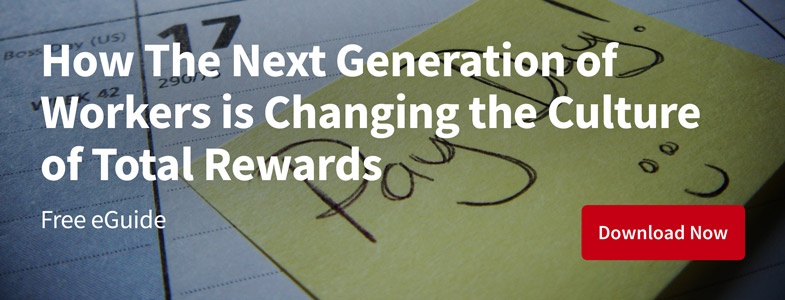Once considered a taboo subject, salary is now more openly discussed among coworkers than ever. In fact, in a survey we conducted of 1,200 actively employed adults in the U.S, nearly half of our respondents confessed they know how much their colleagues make.
This share is likely to increase, as our results show that younger workers are more than twice as likely to share salary information than older workers. Among Millennials (ages 23-38), 56% would share or discuss their salary with their colleagues, compared to only one in four Baby Boomers (ages 55-72). The gap widens with coming-of-age Generation Z, where 61% reported they’d share salary with colleagues.

The next decade, one that sees Baby Boomers retire and Generation Z fully enter the workforce, will be pivotal for companies who wish to evolve their corporate culture to keep up with employees’ changing expectations. And with salary secrecy disappearing with or without company-controlled messaging, organizations will be wise not to underestimate the power of transparency.
A related survey by Glassdoor reveals that 70% of employees globally believe salary transparency is good for employee satisfaction. Almost the same amount (69%) wish they had a better understanding of what fair pay is for their position, for their skill set at their company, and in their local market.
Pay transparency directly from company management, rather than whispered among coworkers, offers a win-win scenario. It strengthens trust between employee and organization, improves employee motivation and performance, and reduces the risk of losing top talent that do not feel they are being fairly compensated. Transparency can also help reduce the high costs of replacement hiring, which costs as much as one-third of each former worker’s salary to rehire.
For companies that want to commit to more transparent practices around pay, management must create visibility to employees into how their pay is calculated. Investing in digital tools can help show employees how their performance contributes to their pay and what their financial growth trajectory looks like long-term.
Employees who understand how their compensation aligns with overall corporate goals are more likely to remain with a company for the long haul. As we’ve seen in our survey results, the coming-of-age Gen Z (and future generations!) will not only want pay transparency but are going to create it with or without management’s input. Pay transparency is here to stay, and organizations that continue to embrace this will be rewarded by a workforce that is more motivated, high performing, and loyal.
Get the tips you need to develop programs to effectively attract and retain talent for years to come with our e-guide: How The Next Generation of Workers is Changing the Culture of Total Rewards.




